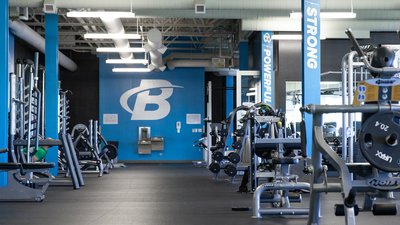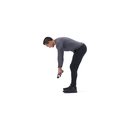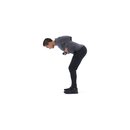For the average trainer, the much desired lat spread does not come easily. In order to have lat flare you must first develop lats and herein lays the problem for many. Lat training is no different from the training of other body parts. There are dozens of various methods and techniques prescribed to widen the lats. Almost every routine tells you to perform chins, bent over rows, dumbbell rows, pull downs, T-bar rows, and seated cable rows.
In fact, you would be hard pressed not to find a lat program that did not contain these movements. They are your basic lat exercises and you will have to do them to develop your lats. Some movements will work better for some while other movements will work better for others. The movements are not the problem, its the technique used, or in this case not used, and that presents the problem for most trainers.
Developing Great Lats
For a great many bodybuilders, proper feel and technique in performing lat work comes later on in their training. Unfortunately for most it is much later. Although thickness is obtained, the width and flare of the lats lag behind. The problem is due to not employing the correct technique in performing the various movements used to widen the lats. The technique is not really natural in nature and requires understanding, and a great deal of practice to master.
The biceps come into play heavily while performing any movements for the back, especially the lats. You cant work the lats without the biceps becoming involved to a very large degree. The secret is to limit the involvement of the biceps as much as possible. Most beginners use almost only bicep strength in performing lat exercises and this limits the results they can expect to receive. The biceps, forearms, and grip must be secondary muscle actions while performing lat movements... not foremost.
The hands must be viewed as hooks or cups that hook the bar. The mind must be focused on the back executing the movement and not pulling with the biceps. For most, this is difficult to do in the beginning as you cannot ignore the fact biceps are pulling muscles and used in any pulling movement. Mind visualization and practice are required in order to perform lat exercises properly for maximum benefit.
Although this technique is to be used on all back and lat movements, let me describe it using the bent over row as an example. Assume the bent over row position. Hands on the bar about shoulder width apart, your feet slightly wider than shoulder width. Keep your knees lightly bent throughout the movement. Bend over at the waist with your upper torso slightly more than parallel to the floor. Now focus on your arms and hands being nothing more than hooks on the bar. Concentrate full on your back and start the movement with your lats, not your arms. Try to make your shoulder blades touch one another.
Your focus must be on the lats doing the work, not the arms. The only way for most bodybuilders to properly perform lat work is to practice form and technique with very light weight. Once you have mastered the technique you can then begin adding weight to your exercises. Many bodybuilders use weights that are far too heavy for performing lat movements correctly. Poor form on lat exercises only places you at higher risk for injury and prevents you from working your lats the way they should be worked.
Chins are the absolute hardest movement to perform properly. Next are bent over rows. Both are excellent lat movements and allow for varied hand spacing to hit all aspects of the lats. You should continue to practice all lat movements using light weights without worrying about anything except your form. So that you will not feel using light weights counter productive to your training, I suggest you follow this giant set routine.
You will have to use light weights to make it thorough and it will give you plenty of practice. After following this giant set for about six weeks you should have the movements down pretty good and can advance to heavier weights and fewer movements per workout.
Begin by thoroughly warming up the lats. I suggest you perform chins for two sets of ten reps. If you are unable to do ten chins dont worry about it and every two sessions try to add one more repetition. Chins are difficult for most and I would not worry about the total number of reps you can actually perform. Just keep working on them. Since this is the warm-up movement, allow yourself about two to two and a half minutes between sets and the start of your workout.
The following movements are to be performed one right after another with no rest in between exercises. Once you have completed all the exercises in the order listed, this will constitute one giant set and you are to rest for two minutes before moving on to your next giant set. Remember; focus on form and not how much weight you can lift. This routine is designed to help you achieve the feel for working the lats.

BodyFit
$6.99/month- 2,500+ expert-created single workouts
- 3,500+ how-to exercise videos
- Detailed workout instruction
- Step-by-step workout tips
- Training at gym or at home
- Access to Workout Plans
- Access to Bodyfit App
- Store Discounts
Already have a Bodybuilding.com account with BodyFit? Sign In

What comes with BodyFit?

- Instructional Videos
Don't risk doing a workout improperly! Avoid injury and keep your form in check with in-depth instructional videos.

- How-to Images
View our enormous library of workout photos and see exactly how each exercise should be done before you give it a shot.

- Step-by-Step Instructions
Quickly read through our step-by-step directions to ensure you're doing each workout correctly the first time, every time.
As noted, this is one giant set. Now rest for approximately two minutes and perform another giant set as outlined above. Perform a total of three giant sets. Think lats, ease the tension of your grip on the bars and use your hands as hooks. Make the first action in each movement that of starting with the lats.
Try to touch your shoulder blades together. Concentrate on the lats the entire time. This routine should be followed only one day per week. I would also recommend you perform some movements for the rear delts after completing your lat work. Seated or standing bent over lateral raises. You will have to use a much lighter weight than normal due to the amount of work your rear delts already incurred during your lat workout. It is also a good day to add calf and ab work.
I cant stress enough the importance of your mind focusing on the lats throughout the movements. For all the years I have been in this business, I can tell you right now, nine and a half out of ten people will attempt to use more weight than they should in following this program and loose the intended benefit of the program itself. You are to learn how to make the lats work, not the arms and this cannot be accomplished if you let your ego take charge.
Conclusion
Try to add as little weight as possible each week. If you cannot add weight without executing the movements properly thats fine, dont worry about it. For the six weeks or so you are following this program, the amount of weight used is not of concern. Again... it is form and technique. Even advanced bodybuilders can benefit from visiting this routine from time to time. Quite often advanced bodybuilders themselves tend to get a little sloppy in the form category and this routine will help bring them back in line.
Once you get the proper form and technique down you will be surprised at the speed in which you will be able to develop your lats. That much desired lat spread will flare with the slightest contraction.




